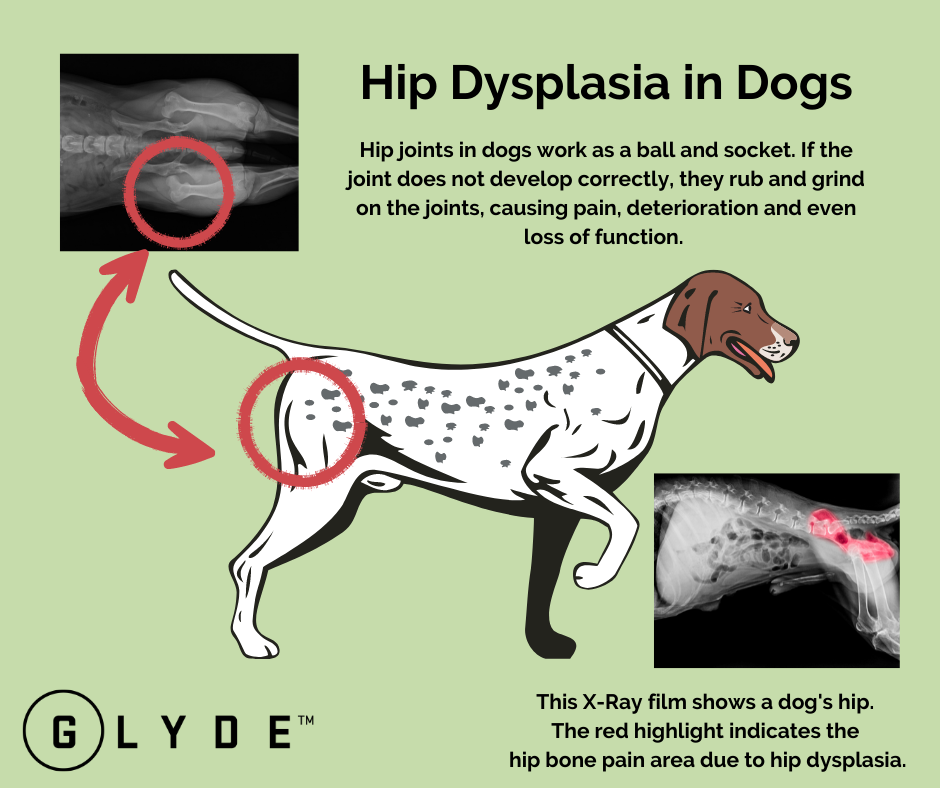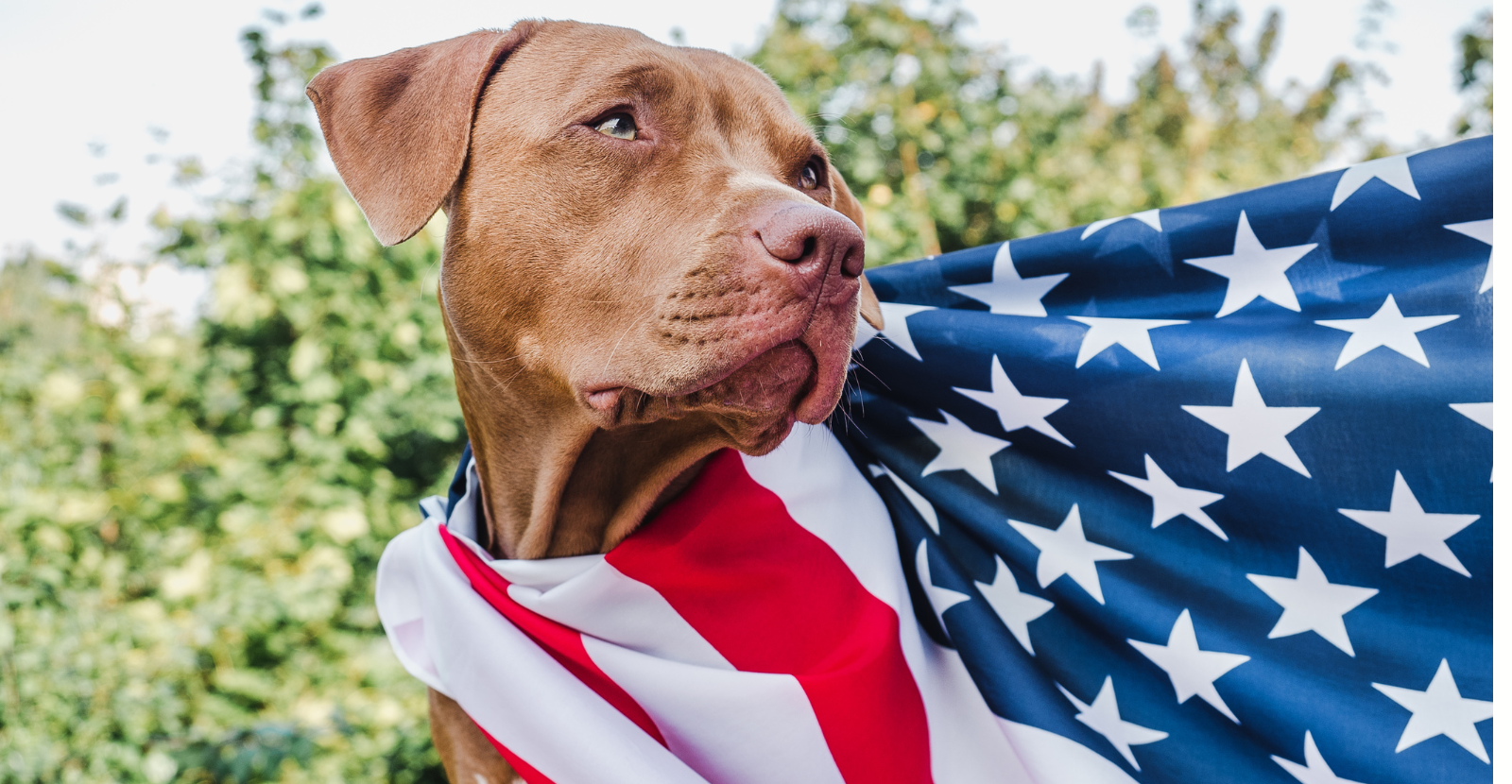Has your dog been diagnosed with hip dysplasia? Or have you heard of this term, but are not sure what it means? If your dog has a diagnosis of hip dysplasia, the information here will help you navigate what it is and what you can do to help your dog still live a happy, active life. Dogs age and get injuries, just as humans do. They have genetics that may mean a diagnosis such as hip dysplasia will happen. And just as you would for a human, you would address it with a visit to your doctor (or in your dog's case, a veterinarian) to find treatments to help. A visit to the veterinarian is required to determine if your dog has this skeletal disease known as hip dysplasia. What does this mean? Read on to find out.
First, some good news: you and your dog are not alone with a diagnosis of hip dysplasia. Unfortunately, dog hip dysplasia is one of the most common skeletal diseases in dogs. The good news is your dog can still live an active life, even with hip dysplasia.
What is hip dysplasia in dogs?
Our dog's hips are built similar to our own hips. Just as we have a ball and socket joint for our hips, so do our dogs. Ideally, the thigh bones fit snuggly into the hips with ligaments and cartilage to cushion the connection and make it move smoothly. When hip dysplasia happens, the ball and socket of the hip joints have an abnormal growth with insufficient coverage, which makes the joints become loose and unstable. Often, with looser joints, shifting happens and the proper positions fall out of place. This can cause long-term joint issues as well as scar tissue around the joints. Bone spurs can develop, and the pain associated with this increases over time. Your dog may have early signs of this, but you will notice more as they age and time takes a larger toll on their mobility.
Here is an illustration of the area this disease takes place:

What are the causes of Canine hip dysplasia?
Unfortunately, some dogs will get dog hip dysplasia because it is an inherited skeletal disease. Canine hip dysplasia occurs when the dog's joints are not developed quite right. The biggest factor is genetics. However, rapid weight gain and obesity can force the issue to the point the joints are giving out and you may notice the symptoms more. While weight gain is not the cause of hip dysplasia, it is a reason you might see the signs. So if you are looking for the main cause of hip dysplasia, look no further than the ancestry of your dog. Obviously, we cannot change the ancestry.
What are Dog hip dysplasia symptoms?
The symptoms of hip dysplasia vary, some clear cut signs of that your dog may have hip dysplasia include:
- Obvious stiffness, pain or limping
- Decreased range of motion in hips and rear legs
- Audible clicking sound when walking
- Reduced activity or reluctance to do things they have done before such as climbing stairs or jumping in cars.
Is there a way to prevent hip dysplasia?
Unfortunately, there is no way to prevent it from happening. It is an inherited joint disease and it can impact a dog as young as age 1. Larger dogs are most susceptible due to their size. If a dog already has the skeletal disease, you may not know until they age and the symptoms become more prevalent. Weight gain and age can make mobility more painful and will grow into a concern requiring a veterinary office visit. It is recommended to protect your dog's joints early with the addition of a high-quality joint supplement. Protect your dog's joints by adding high levels of ingredients such as glucosamine for dogs, chondroitin for dogs, and other ingredients that promote joint health and improve normal cartilage development.
Which dog breeds are more prone to hip dysplasia?
Every dog is different. However, some breeds are more susceptible to this illness. Because of their size, hip dysplasia in dogs is common in these large to giant breed dogs. It is especially important that you keep in mind your dog's joint health, especially if you have one of these breeds of dogs:
But this list isn't the only dog breeds that get hip dysplasia. According to the Orthopedic Foundation for Animals (OFA), they have tracked and ranked dogs most likely affected by hip dysplasia. This group came up with a list of the top dog breeds affected. The results may surprise you. While these problems rank highest in large and giant breed dogs, there are other smaller dogs who might get it too.
Here are the top 5 dog breeds for hip dysplasia:
- Pug
- Bulldog
- Olde English Bulldog
- Dogue de Bordeaux
- Neapolitan Mastiff
Check out the full list here and click on “hip dysplasia statistics.” You can also click on your favorite breed and learn the statistical data they have for all OFA disease database entries.
How do you treat Hip dysplasia?
Your veterinarian will offer the best treatment plan for hip dysplasia based is best for your dog. Here are some treatment options:
- Pain relief through an anti-inflammatory is recommended.
- Rest to help prevent further pain and swelling.
- For some, surgery may be required.
- For others, a joint mobility supplement with glucosamine and chondroitin can help improve mobility.
Unfortunately, there is also no way to reverse the effects of hip dysplasia. A plan of treatment is required. While you may consider prescribed medication, remember just as in humans, pain medication may not be a good long-term solution. Consider using all-natural supplements, such as Glyde™ Mobility Chews Hip & Joint Supplement for Dogs.
Can diet or exercise help my dog with hip dysplasia?
Your veterinarian may recommend your dog lose weight as a first effort to alleviate painful symptoms. This will not cure the issue, but it may make it so your dog can move easier. It is always important to have your dog on a healthy diet, especially if it is a large breed dog. Talk to your veterinarian about a good exercise and diet routine, if weight gain is an issue. Simple steps might be adding a casual 20-minute walk into your dog’s routine as well as adding a joint supplement to reduce swelling of the joints and pain.
Use a vet-recommended joint supplement
Parnell Living Science is the makers of Glyde™ Mobility Chews, an all-natural hip and joint supplement with strong scientific backing to combat joint pain. The ingredients contain a unique combination of green-lipped mussel, glucosamine, and chondroitin to promote healthy joints. Green-lipped mussel (GLM) contains beneficial nutrients such as omega-3 fatty acids, glycosaminoglycans, and antioxidants. Combined with glucosamine and chondroitin, GLM (one of the best sources of omega-3) can help decrease pain and preserve joint function. Glyde Mobility Chews is the only joint supplement with proven levels of these key ingredients to help maintain youthful mobility throughout your dog’s life.
Of course, there are many other joint supplements on the market. Be sure you know what to look for in a joint supplement.
What else can I do to ease my dog’s pain?
Simply think of what might help you if you had joint pain, and the tips are about the same for your dog. Here are a few ideas:
- Massage your dog’s joints and muscles
- Add a joint supplement to help with swelling
- Keep your dog out of cold weather
- Provide a firm, orthopedic bed for your dog
- Add rugs and/or carpet areas for your dog to walk and lay on. This will prevent your dog from slipping on floors.
While it is hard to detect what might be the mobility issues you are seeing in your dog, it is always good to visit your veterinarian with any concerns. Arthritis in dogs is also a joint disease. Find out and take the arthritis quiz by clicking on the link below!
Of course, we love our fur-babies and want nothing but the best for them. As with anything, if you see obvious behavior changes, call your veterinarian and schedule an appointment.
Sources:
FETCH by WebMD, "Canine Hip Dysplasia"
Senior Pup, "Understanding Canine Hip Dysplasia"
WikiHow Pets, "3 Ways to Manage and Treat Hip Dysplasia in Dogs"






